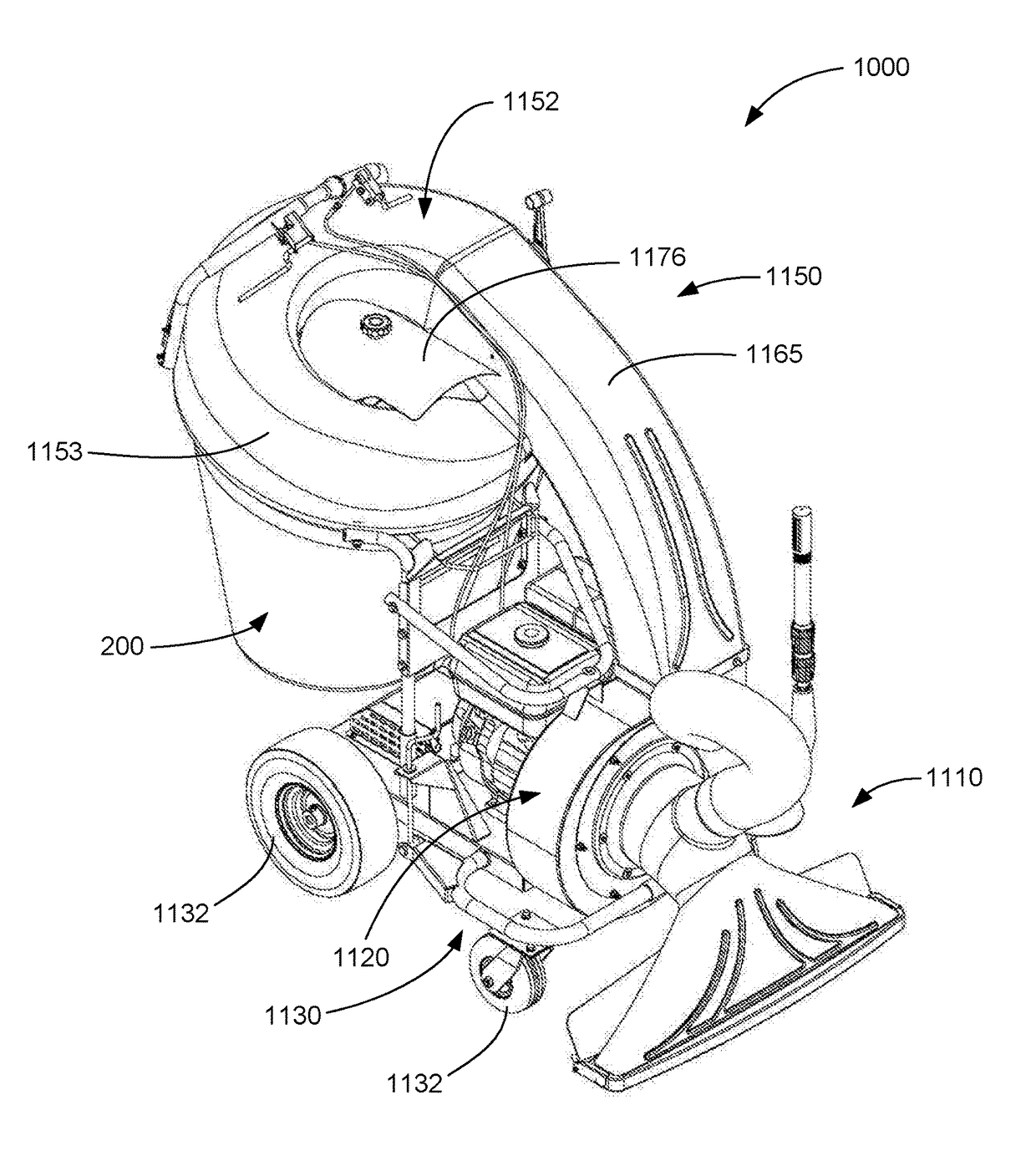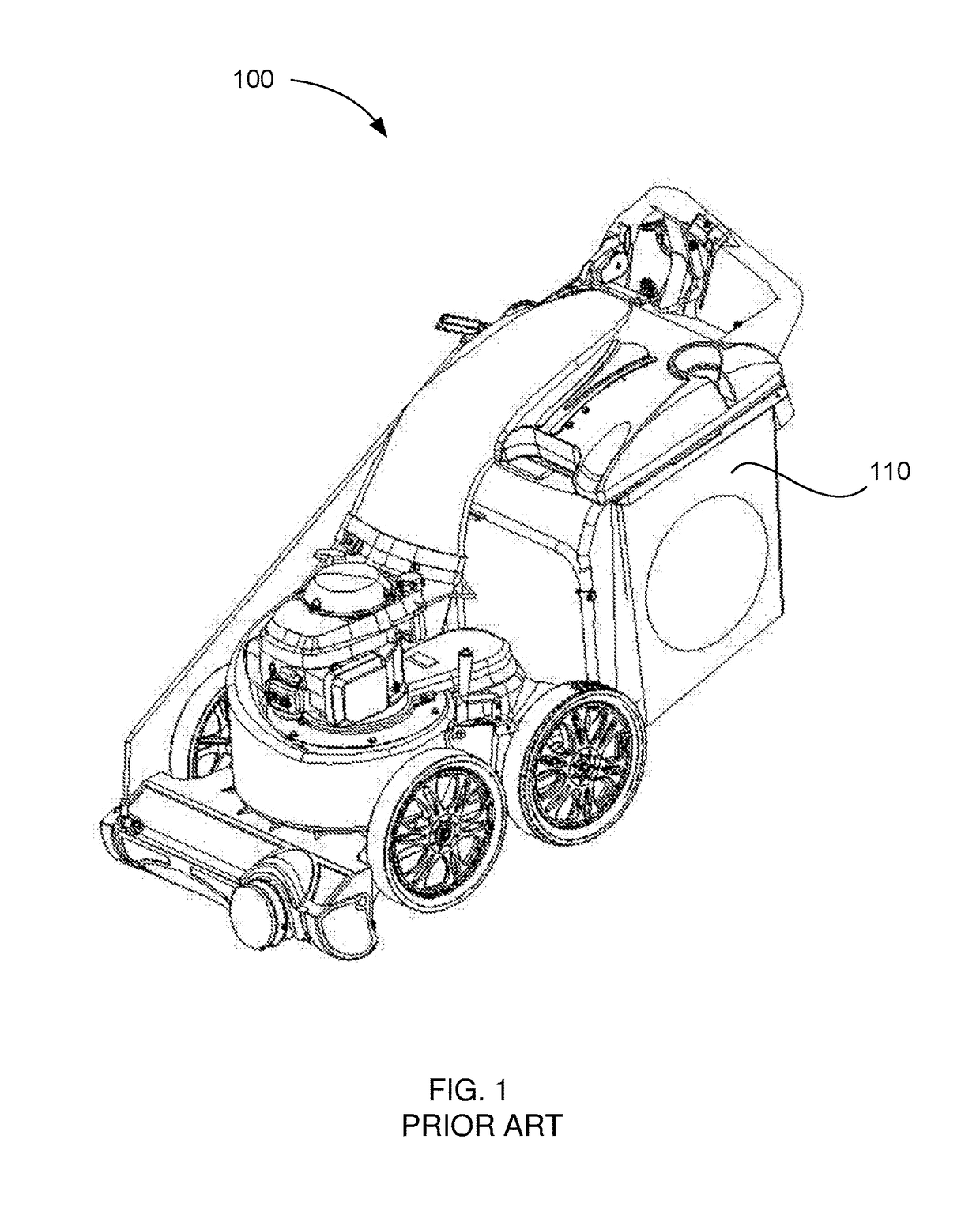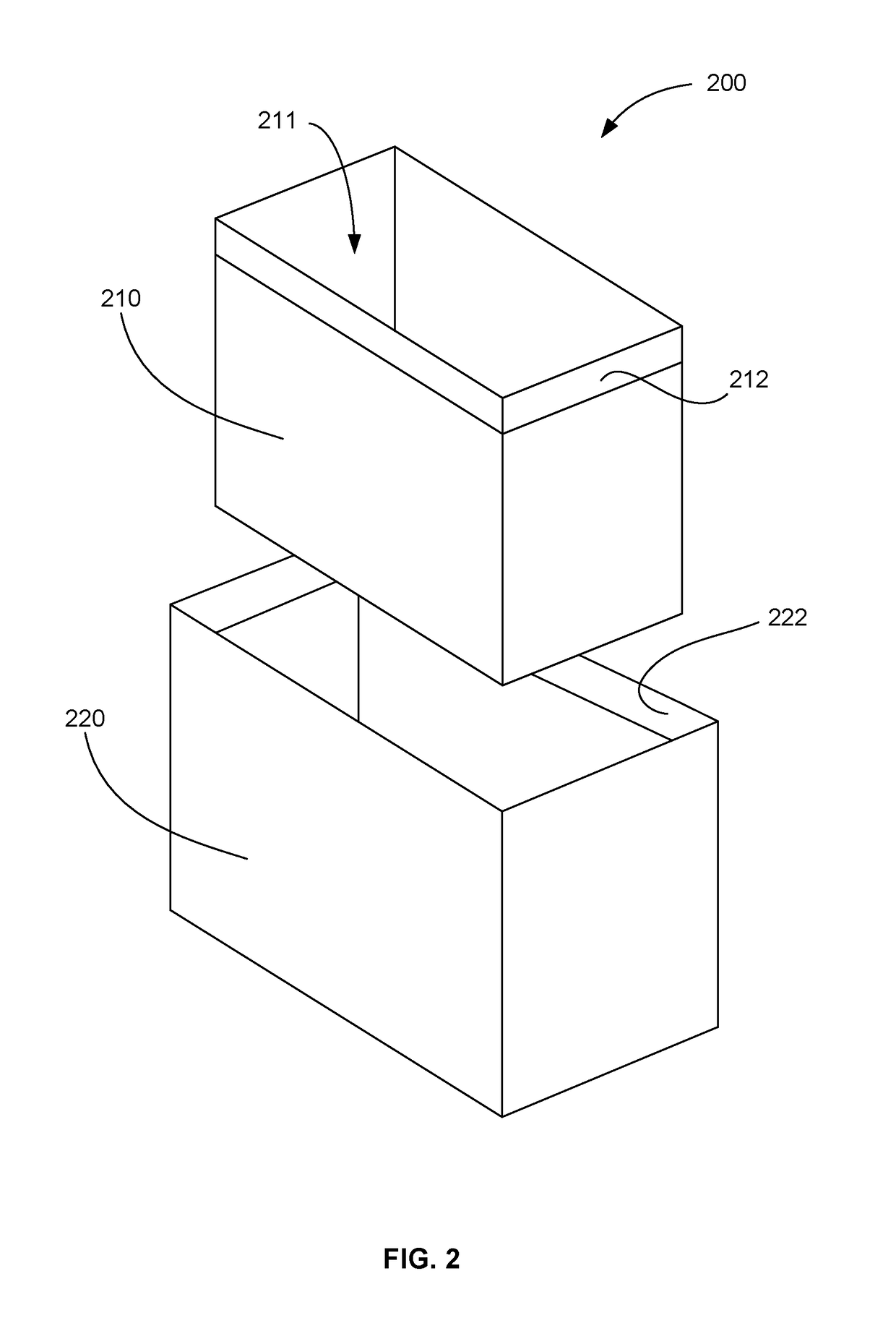Debris-collecting apparatus and method of collecting debris
- Summary
- Abstract
- Description
- Claims
- Application Information
AI Technical Summary
Benefits of technology
Problems solved by technology
Method used
Image
Examples
Embodiment Construction
[0020]Embodiments of the current invention provide debris-collecting systems and bagging apparatus for debris-collecting systems.
[0021]FIG. 1 shows a prior art debris-collecting system 100, which includes a prior art woven nylon bag 110. When debris enters the bag 110, at least a small portion of the debris escapes through pores in the bag 110.
[0022]FIG. 2 shows a bagging apparatus 200, which may be used (for example) with the debris-collecting system 100. The bagging apparatus 200 includes a primary bag 210 and a dust skirt 220. The primary bag 210 may be constructed of polyester non-woven felt, woven nylon, or any other desirable material. While the primary bag 210 may have various shapes and sizes, it will typically have an open end 211 through which the debris may enter and be removed.
[0023]The dust skirt 220 is configured to wrap around the primary bag 210, and the bagging apparatus 200 may include structure for holding the dust skirt 220 outside the primary bag 210. For exampl...
PUM
 Login to View More
Login to View More Abstract
Description
Claims
Application Information
 Login to View More
Login to View More - R&D
- Intellectual Property
- Life Sciences
- Materials
- Tech Scout
- Unparalleled Data Quality
- Higher Quality Content
- 60% Fewer Hallucinations
Browse by: Latest US Patents, China's latest patents, Technical Efficacy Thesaurus, Application Domain, Technology Topic, Popular Technical Reports.
© 2025 PatSnap. All rights reserved.Legal|Privacy policy|Modern Slavery Act Transparency Statement|Sitemap|About US| Contact US: help@patsnap.com



